How Can You Effectively Manage Cash Flow For Your Small Business?
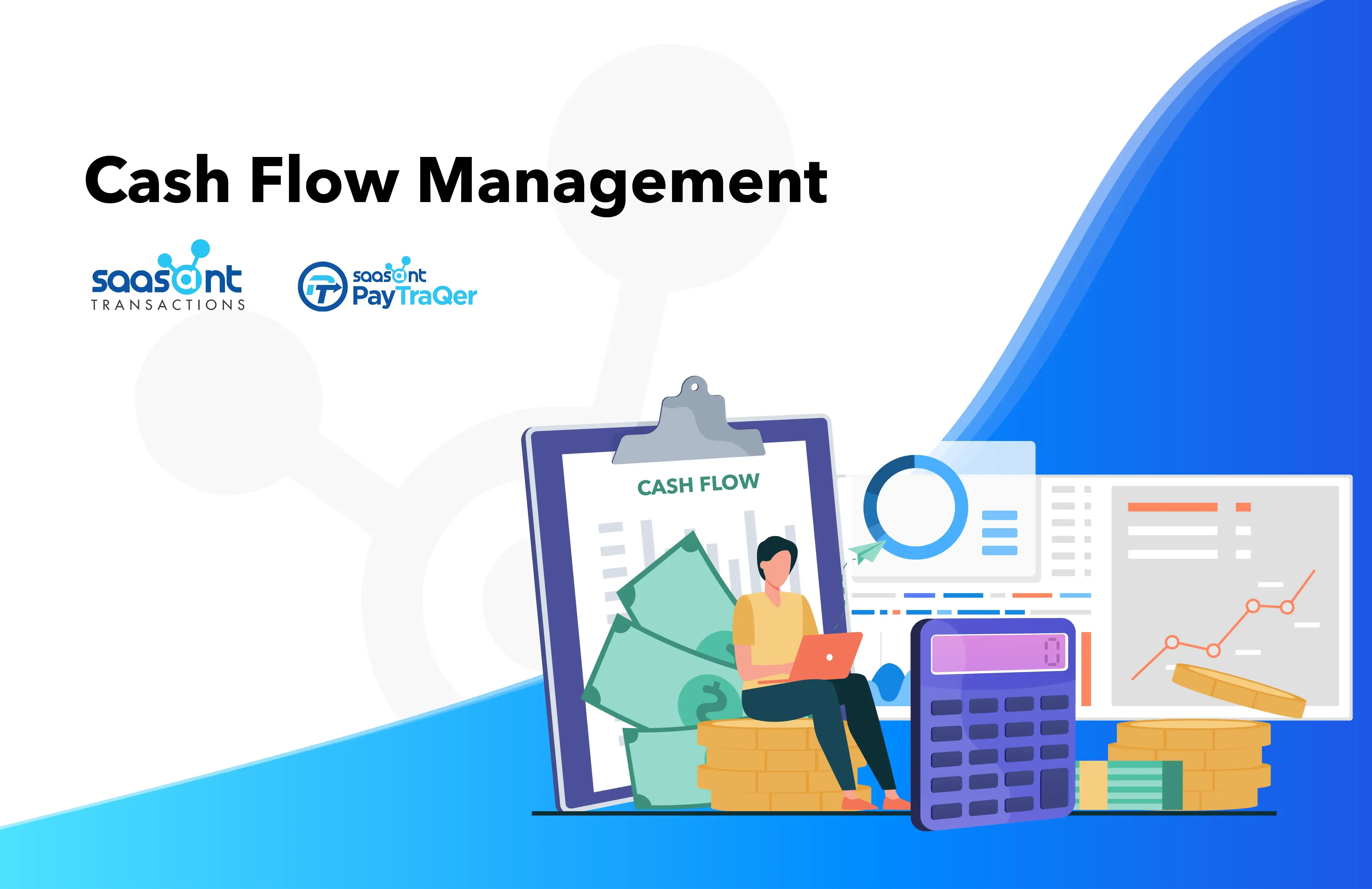
Most small business owners are constrained by limited capital or irregular cash flow when they start their businesses. This is mostly the case until they see significant growth and reach financial stability. Until then, an unforeseen expense would result in difficulties in running business operations. In some situations, it can break the business.
To the surprise, Forbes cited US Bank’s study, finding that 82% of small businesses fail because of poor cash flow management.
So, owners can’t take their chances with a simple analysis or report when it comes to a business's success, as it might help them turn the tides in their favor. For any given business, one must have insights on three important statements that business owners need to get familiar with;
Profit and Loss Statement
Balance sheet
Cash Flow Statements
Consequently, cash flow statements carry the weight of such importance that will help to understand the realistic cash position at any given time of the organization.
In this article, you will learn more about cash flow statements, its effective management, and how to use them to analyze your business performance.
Also, it’s important to understand the basics of cash flow its metrics and methods. With a proper grip over the basics, you can understand how cash flow management is closely associated with your business’s success. It’ll enable control over the cash flow mistakes you made in the past or avoid making mistakes in the near future.
Contents
What Is Cash Flow?
What is a Cash Flow Statement?
Why Do You Need Cash Flow Statements?
Why is Cash Flow Management important to a Business?
How can a business track cash flow?
How to Manage Cash Flow?
How to improve cash flow?
What Is Cash Flow?
Cash flow is defined as the amount of cash or cash equivalent that a company receives through sales and spends money to run the business.
In a nutshell, It denotes the flow of cash that comes in and goes out of business.
You can understand it well when associating cash flow statements with the business. Let us take an example of Anderson’s business.
Anderson owns an online store that sells beauty products. Like any other business prodigy, expenses, and revenue repeatedly echo in his mind. His expenses include supplier payments, salary payments, taxes, and transportation costs. His prime revenue comes through product sales.
In brief, all his expenses are outflows, and his revenue is inflows. Besides, a business has other inflows, such as funding, bank loans, cash receipts, and tax refunds. If his organization receives more than the outgoing money, it will be considered a positive cash flow. Vice versa, if the outgoing amount is higher than the organization receives, it is negative cash flow. It’s digestible, right?
Cash flow is crucial in running any successful business, like many other factors. Without proper cash flow management, companies can find themselves stuck in the mud of debt, unable to pay their monthly bills. Let us look closely at a cash flow statement in the next section.
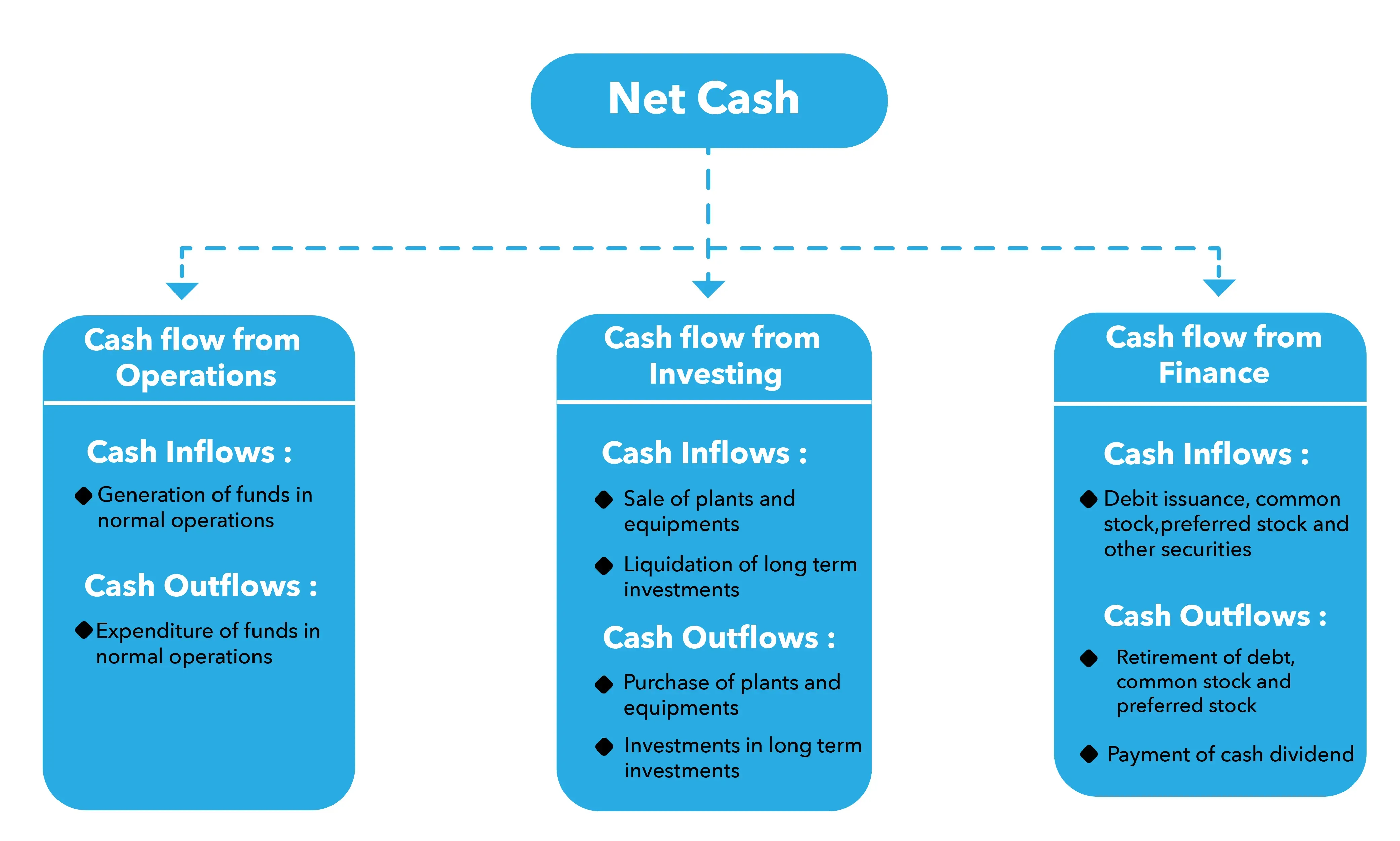
What is a Cash Flow Statement?
It’s a statement that contains in-depth information about the business's cash inflows and outflows.
There are three sections in a cash flow statement:
Operating Activities - It is the net cash generated by a company's regular business operations in a specific period of time. It mainly focuses on cash inflows and outflows of business, such as inventory purchasing and selling, offering services, and salary payment.
Investing Activities - Investing cash flow is the net amount of cash a company uses to invest in its long-term assets, such as property, plant, and equipment. It provides information about the organization's capital expenditures and investments. It will help businesses to understand how business is using resources.
Financing Activities - Financing cash flow is a company's net amount of cash to finance its activities, such as getting a small business loan to purchase equipment or expand operations. If you receive interest for profit from financial activities or dividends, it’ll be considered an inflow from financing activities. If the business pays off its debt, like paying investors, it will be recorded in the financing outflows.
Why Do You Need Cash Flow Statements?
Like many other business owners, Anderson used an income statement to analyze his business performance for quite some time. It took a while for him to understand that an income statement was insufficient to understand his cash flow clearly. There are some essential missing pieces in the income statement compared to the cash flow statement. To understand it better, you must understand the difference between cash flow and income statement.
Cash Flow and Profitability – Difference
Managing a company's cash flow means always having enough funds available to cover all bills that need to be paid. This may be achieved by keeping close tabs on income and expenditures and making enough money available to meet short-term needs.
On the other hand, profitability is focused on making a profit. When a business generates more revenue than it spends, it is profitable. Keeping the business profitable relies on the effective management of costs and income.
A few critical things will be overlooked as income statements don’t depict the entire business transactions. Likely,
Income statements only indicate a company's profitability for a specific time period, usually one year. This implies that they do not disclose how much cash a company has at any particular time, which is critical information for successful cash flow management.
Another issue with utilizing income statements to manage cash flow is that they don’t account for the company's expenses. They may, for example, exclude inventory costs or interest payments. This might create a false impression of the true health of the company's finances and make it difficult to make sound cash flow decisions.
The income statement doesn’t cover the equipment purchase you made. The cost of equipment will be calculated using its life span. For example, if you purchase a piece of equipment for $4000, consider it a ten-year life span. The income statement will show only expenses of $400 spread to each year for ten years.
Your net income is not taxed when you run the income statement report. So, if you think your business has a positive bank balance based on the income statement, it will not have tax-related information.
When a business uses accrual-based accounting, you will record it even when you haven’t received the payment. So, based on the income statement, you will have an amount from sales that you didn’t get paid yet.
How to Analyze Cash Flow Statements?
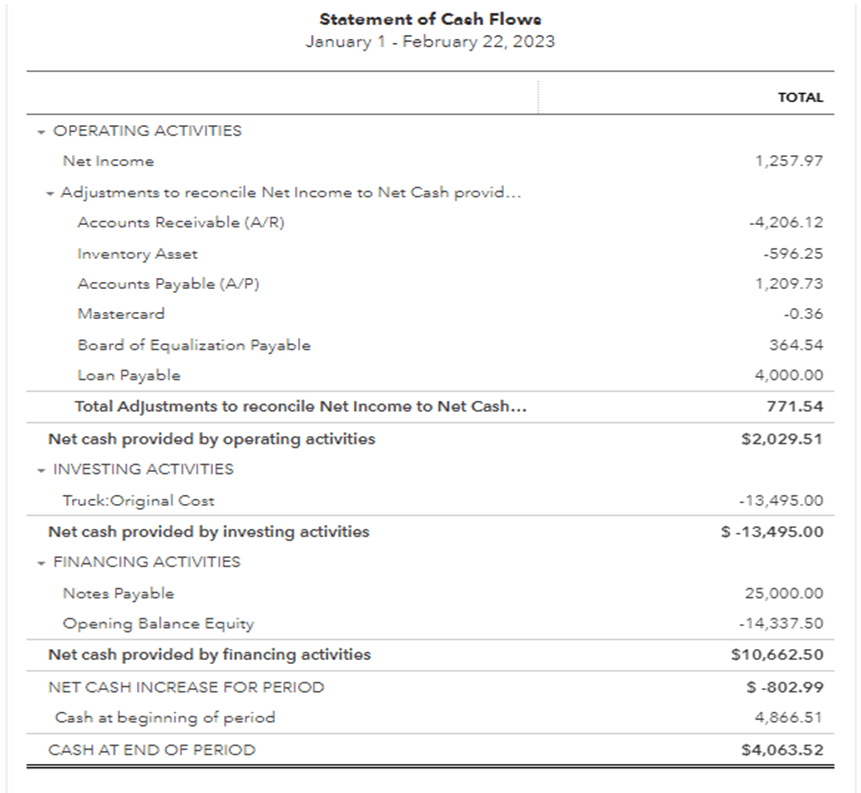
Account Receivable - US $ 4206.12 is the amount the business has yet to get paid. The inventory asset amount denotes the inventory value of US $ 596.25. Accounts Payable amount of US $1209 needs to be given to the vendor merchant where the business procures raw materials. Board of Equalization Payable is the tax refund of US $364.54. The Loan payable amount is US $4000.
When you reconcile the net income to the net cash you earn, it will be US $771.54. Adding operating net cash to the net income for that month, you will get $ 2029.51.
Net Cash from the investing activities is US $13495,
and Net cash from financing activities is US $10662.50.
Cash Flow = Operating cash Flow + Investment Cash Flow + Financing Cash Flow
= $ -802.99
From this, you can infer that cash flow is negative for the month.
You need to analyze why the cash flow is negative.
If you look into the account receivable, it is US $4206.12. So, you need to collect the remaining payment from the buyers.
The net income from the sales is US $1257.97 for this particular month. You can compare it to the previous month's cash flow statement. If there is a decrease in the net income, you need to find out the cause, like, as a sales aspect, change in customer behavior, and marketing efforts. Based on that, you can focus on what might increase your sales.
Also, you can find where you can cut the cost of operating expenses.
Why is Cash Flow Management important to a Business?
A business's success, regardless of size, hinges on its ability to manage its cash flow. Losing control over cash flow might lead to a business failure.
Why is cash flow management crucial?
Forecasting Cash Positions - Cash Flow forecasting estimates cash flow over a specified period. You can project future monetary positions; with the data in hand, you can sense the cash shortages on the horizon and be prepared to deal with a cash crunch. For example, by comparing the last two years' cash flow statements,
1. You can understand when your sales increased
2. The amount of cash is with you compared to the previous year
3. Areas in which your business is performing well or underperforming
4. Helping in budgeting for the futureTimely Bill Payment - If a firm does not have enough cash to pay its payments on time, it may incur late payment costs, damage to its credit score, and difficulties in receiving future funding.
For example, most small business owners have obligations like paying debts, loan interest, operating expenses, etc. Being a small business owner, what will you do if you find there is a bill due of a large amount and you don’t have the cash required to pay? You may need to find out where to cut the cost or look for additional cash inflows. Cash flow statements help you identify potential cash shortages and prepare you for timely bill payments.To track business spending - A business needs to understand the inflowing money sources to make informed decisions on minimizing expenditures and allocating amounts carefully for each expenditure.
For example, Paying back the principal amount to the bank will not be recorded in the profit and loss statement. But it will be reflected in the Cash flow statement. There might be a profit before you pay the principal amount to the bank. But, you will not have the amount to pay for other expenses. With Cash Flow statements, you can identify such situations.
Also, analyzing cash flow statements will help you to find where you are getting good ROI.Financial stability- Cash flow management helps a business to keep a tab on unforeseen expenses and income deficits. In order to stay afloat, it may be obliged to take out high-interest loans or sell assets at below-market prices if it lacks appropriate financial reserves.
It will help get funds to grow the business- A small business owner who wishes to expand its operations will require additional funding. Proper cash flow management can help them save money for expansion initiatives or qualify for third-party loans or investment funds.
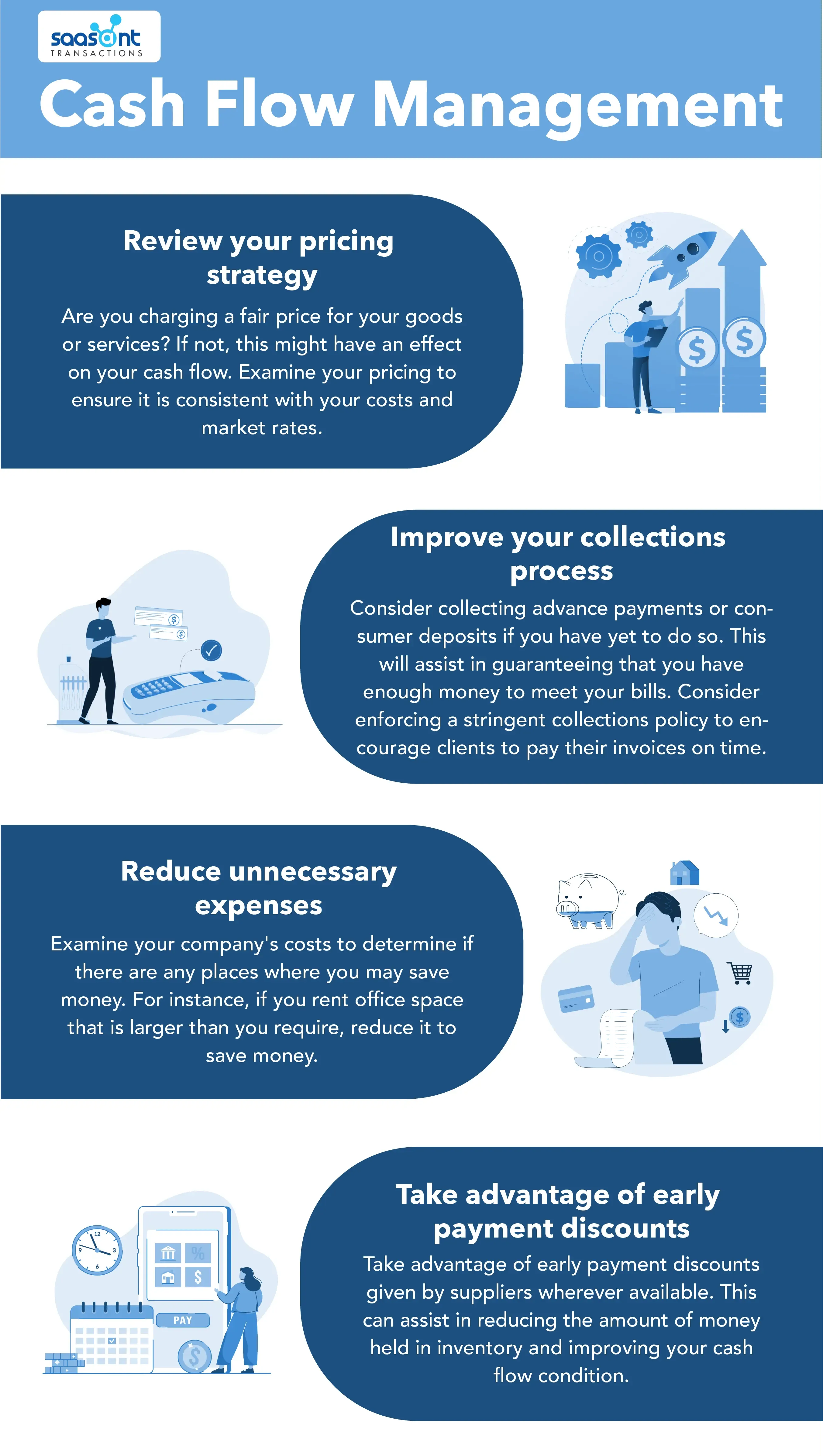
How can a business track cash flow?
The most typical way is to track all money entering and leaving the business through its bank account (or accounts). This will give you a high-level summary of the company's cash flow.
Another approach is to separate revenue and costs for specific projects or kinds of revenue and expenses. This might be useful if you want a more detailed view of where the money comes from and leaves.
For example, you might track all money related to product sales separately from other types of revenue, such as service contracts or rental income.
Accounting software may also be used to track cash flow. This is especially useful if your company has many bank accounts or credit cards. Many accounting software systems allow you to link your bank and credit card accounts so that transactions are imported and sorted automatically. When it comes to tracking cash flow, this may save a lot of time and work.
How to Manage Cash Flow?
Cash flow is the lifeblood of any business, so you must have a good handle on it. Here are some tips on controlling your company’s cash flow:
Understand the money inflow & outflow of your business. This may sound trivial, but many firms do not clearly understand their financial inflows and outflows. Ensure you understand your primary revenue streams and your expense heads.
Product sales or services the business offer are the primary sources for cash inflows, and operational expenses will be the cash outflow for most businesses. If you feel the cash inflow is decreasing through sales, you must scrutinize why your sales decreased, analyzing customer buying behavior and pricing strategy.Leverage technology to your advantage by automating repetitive operations like invoicing, payments, etc. This frees up time for you to concentrate on other key responsibilities, such as building your business!
Have accounting software like QuickBooks or Xero to track invoices and Payments. This will help you stay on top of who owes you money and when payments are due. While speaking about accounting software, one of the time-killing activities is entering the data manually. You can use automation applications like SaasAnt Transactions or PayTraQer to complete the manual bookkeeping process with your accounting software process within a few minutes.Maintain good relations with your lenders. Maintaining strong relations with creditors is critical if you need to borrow money or extend payment terms.
Forecasting future financial requirements can assist in avoiding deficits. You can predict issues and take action to avoid them by anticipating your future monetary needs.
How to improve cash flow?
There are several strategies to optimize cash flow, and the improved method will depend on your firm's specific circumstances. However, here are five broad ideas to consider:
Review your pricing strategy.
In case, as a business owner, you struggle to meet sufficient cash flow to pay your bills and make an investment in an expansion, you may need to look into your pricing strategy.
Analyze whether you are charging a fair price for your goods or services compared to the market standard. If not, this might have an effect on your cash flow. Examine your pricing to ensure it is consistent with your costs and market rates.
For your online business, you can identify the products with high demand and increase their price to market standard. It’ll increase your cash inflow.Improve your payment collections process
Consider collecting advance payments or consumer deposits if you have yet to do so. This will assist in guaranteeing that you have enough money to meet your bills. Consider enforcing a stringent collections policy to encourage clients to pay their invoices on time.
For your online store, you can provide multiple payment options such as credit cards, debit cards, PayPal, and other payment gateways. In that way, you can encourage your customer to make a purchase, thus increasing the cash inflow.Reduce unnecessary expenses
Examine your company's costs to determine if there are any places where you may save money. For instance, if you rent office space that is larger than you require, reduce it to save money, or you can lease the space.Take advantage of early payment discounts
Take advantage of early payment discounts given by suppliers wherever available. This can assist in reducing the amount of money held in inventory and improving your cash flow condition.
Cash Flow Management Mistakes
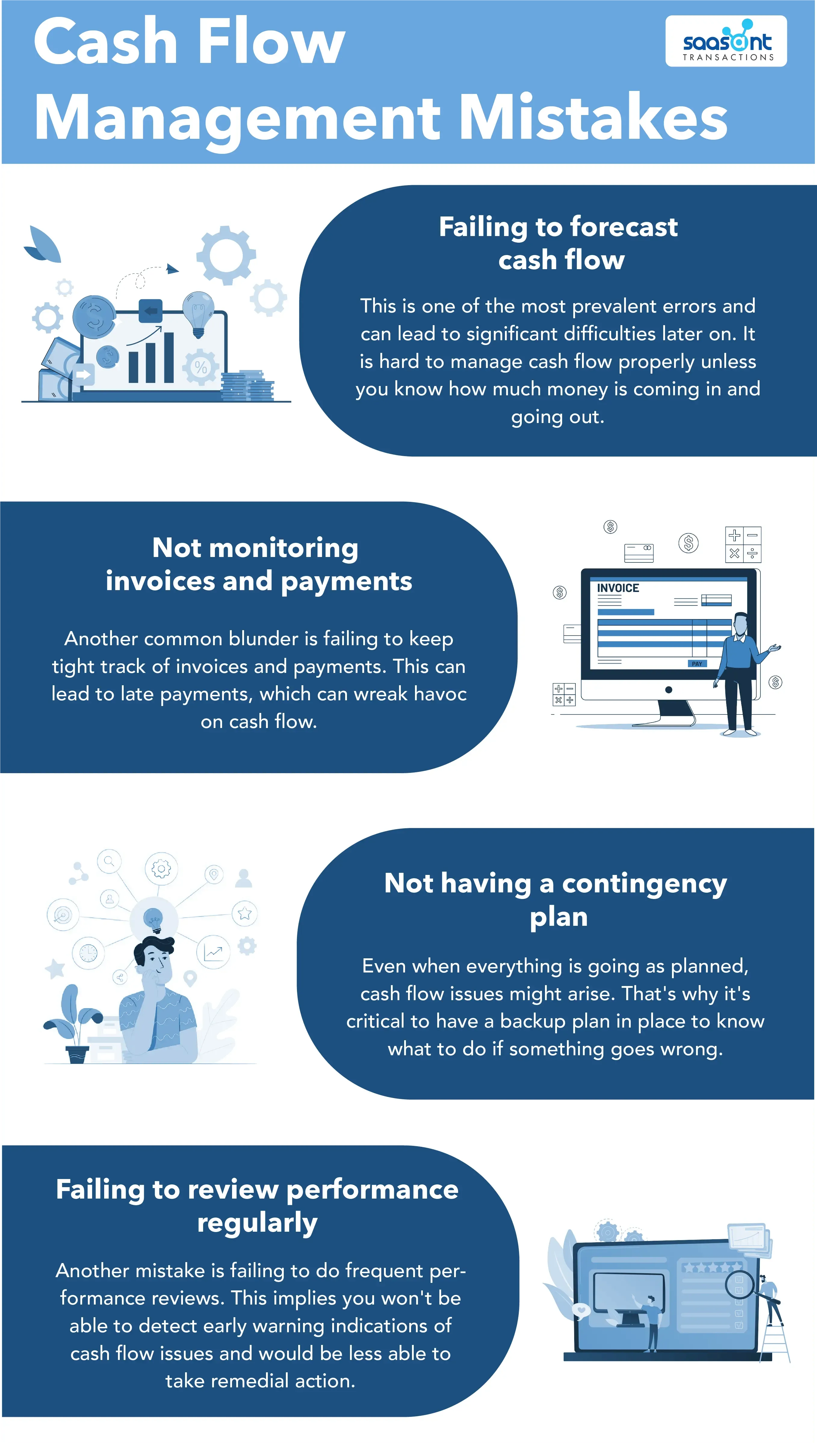
A number of mistakes can be made when managing cash flow. These include
Failing to forecast cash flow - This is one of the most prevalent errors and can lead to significant difficulties later on. It is hard to manage cash flow properly unless you know how much money is coming in and getting out.
Not monitoring invoices and payments - Another common blunder is failing to track invoices and payments tightly. This can lead to late payments, wreaking havoc on cash flow.
Not having a contingency plan - Even when everything goes as planned, cash flow issues might arise. That's why it's critical to have a backup plan to know what to do if something goes wrong.
Failing to review cash flow performance regularly - Another mistake is failing to do frequent performance reviews. This implies you won't be able to detect early warning indications of cash flow issues and would be less able to take remedial action.
Cash flow management is an important tool for businesses to use in order to manage their finances, allowing them to make informed financial decisions and keep on top of spending. Knowing how to handle cash flows effectively may assist organizations in creating solid financial statements that will allow them to grow and develop. As a small business owner, it helps to ensure that you are making the most of your money and set yourself up for long-term success by taking the time to understand cash flow management.